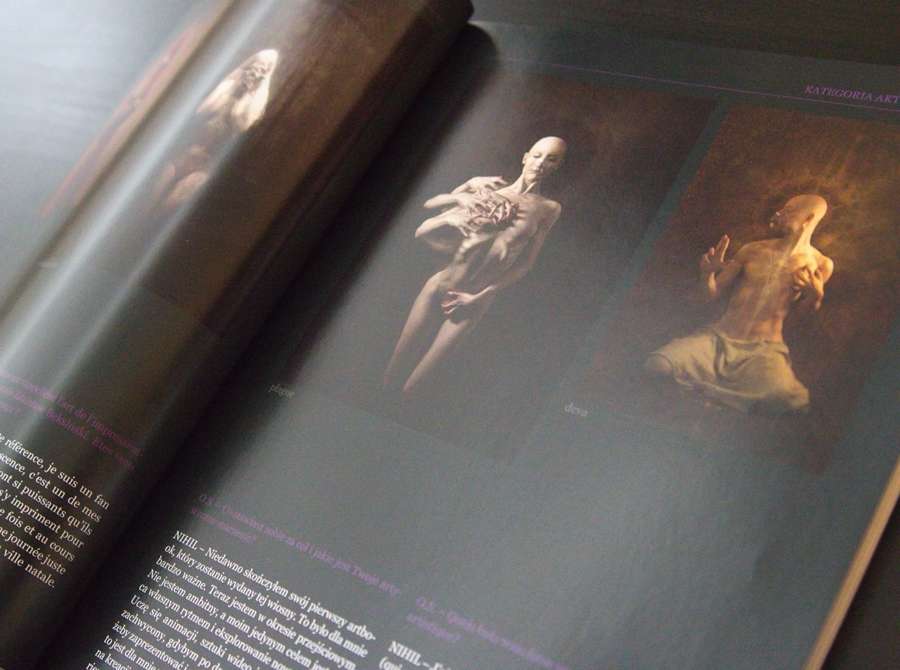
Nihil, this is the moment, when I, as an interviewer would like to introduce your personality to our readers. I discovered many opposites, which you represent. In your art I can see beauty, but it is also very dark. You are a Frenchman, but you live in Oslo. You are a sociable person but in your art you put an emphasis on the loneliness. Tell us about you and about your bipolar world?
I live very well with all my contradictions, I wouldn’t want to be a monolithic block of certitudes. I enjoy the idea that the truth may vary depending on the context, the time etc. I can be fascinated by spirituality while being an atheist, enjoy a peaceful little life while dreaming of other worlds and so on. I just don’t mind.
Human corporeality transforms in your photos all the time. What was an impulse to that subject?
I think a few years ago, I was interested in showing suffering bodies to depict transcendence through pain, like Matthias Grunewald did in his Crucifixion. Now I’m more and more focused on the body as an impersonal vessel for the soul, and I tend to erase faces, hair, genitals and other human characteristics to define an empty, neutral body.
Your photos reminds me the art of amazing polish artist- Zdzisław Beksiński? Are you familiar with his artworks?
Thanks for this reference, I’m a fan of Beksinski since adolescence, it’s one of my favorite painters. His works are so powerful that they infuse in one’s mind and imprint it for a long time. I visited Poland once, and during the trip, I took one day to drive 1000km just to visit Beksinski museum in his hometown. It was an astonishing experience.
What goals do you set for yourself? What is your vocational dream?
I recently completed my first artbook (published this spring), it was an important goal for me so I’m now entering a transition period. I’m not ambitious and my only goal is to continue to work at my own rhythm and explore new techniques (I’m trying animation, video, music…). I’d be glad to get opportunities of exhibitions and publications along the way, but it’s not the most important. I prefer to focus on creativity without the pressure of building a so-called artistic career.
This is the point, when basing on one of your photos, I ask you to describe the process of creating a target picture. It has an educational purpose.
I’d like to talk about my artwork Sainte-Morphine because it’s a prime example of my creative process and especially of how far an image can drift from the original idea. My first plan for this portrait was very colorful and psychedelic. I worked with my girlfriend as a model in a standard studio setting and soon realized that complicated patterns and colors would be detrimental to the serene expression so I decided to keep it simple and clean, and I drew inspiration from traditional Buddhist art. I usually spend a lot of time on the post-treatment. I used photomanipulation and digital painting to remove the hair and rework the body features.
![[NIHIL]](https://www.nihil.fr/wp-content/uploads/2019/09/newlogo3.png)